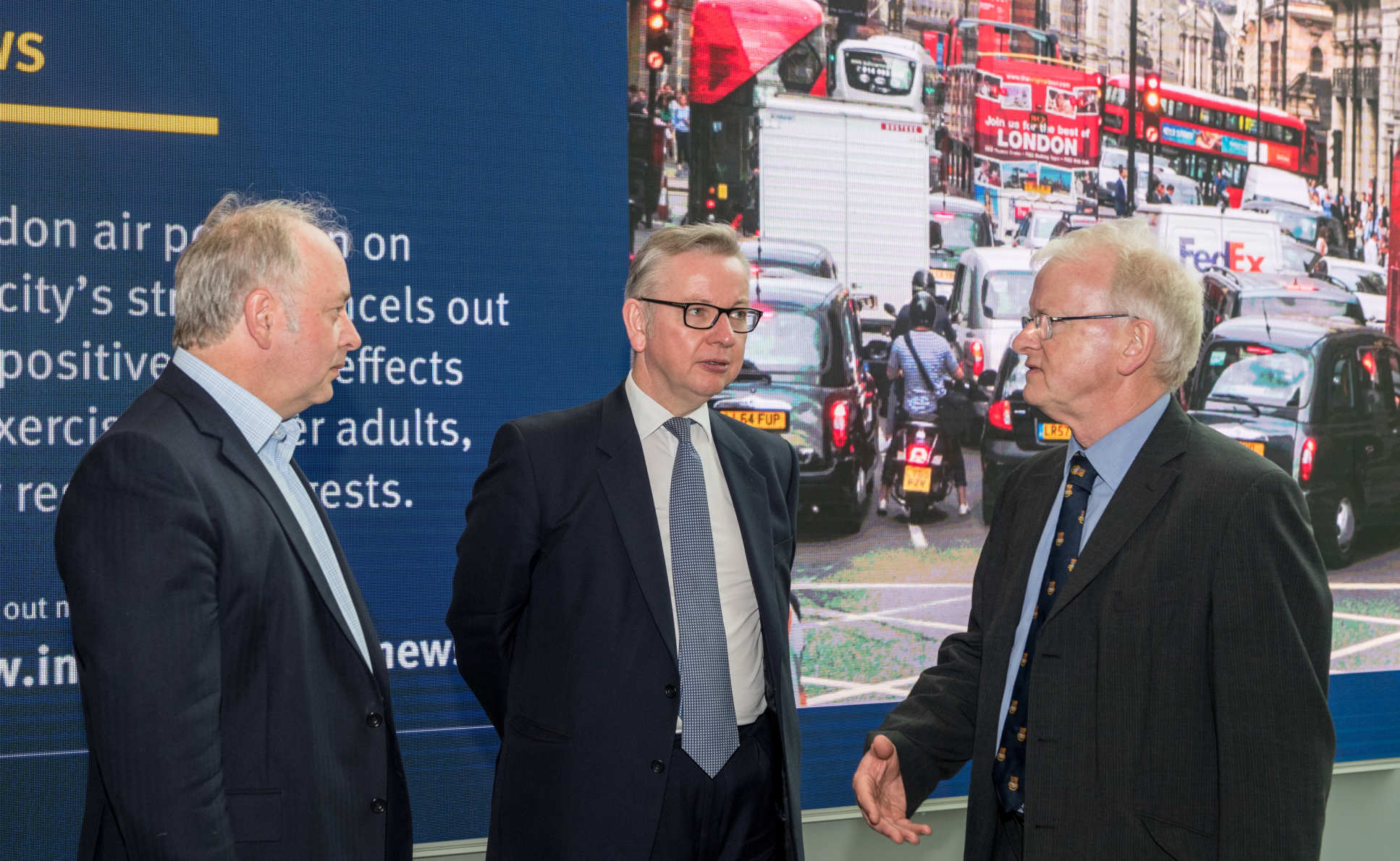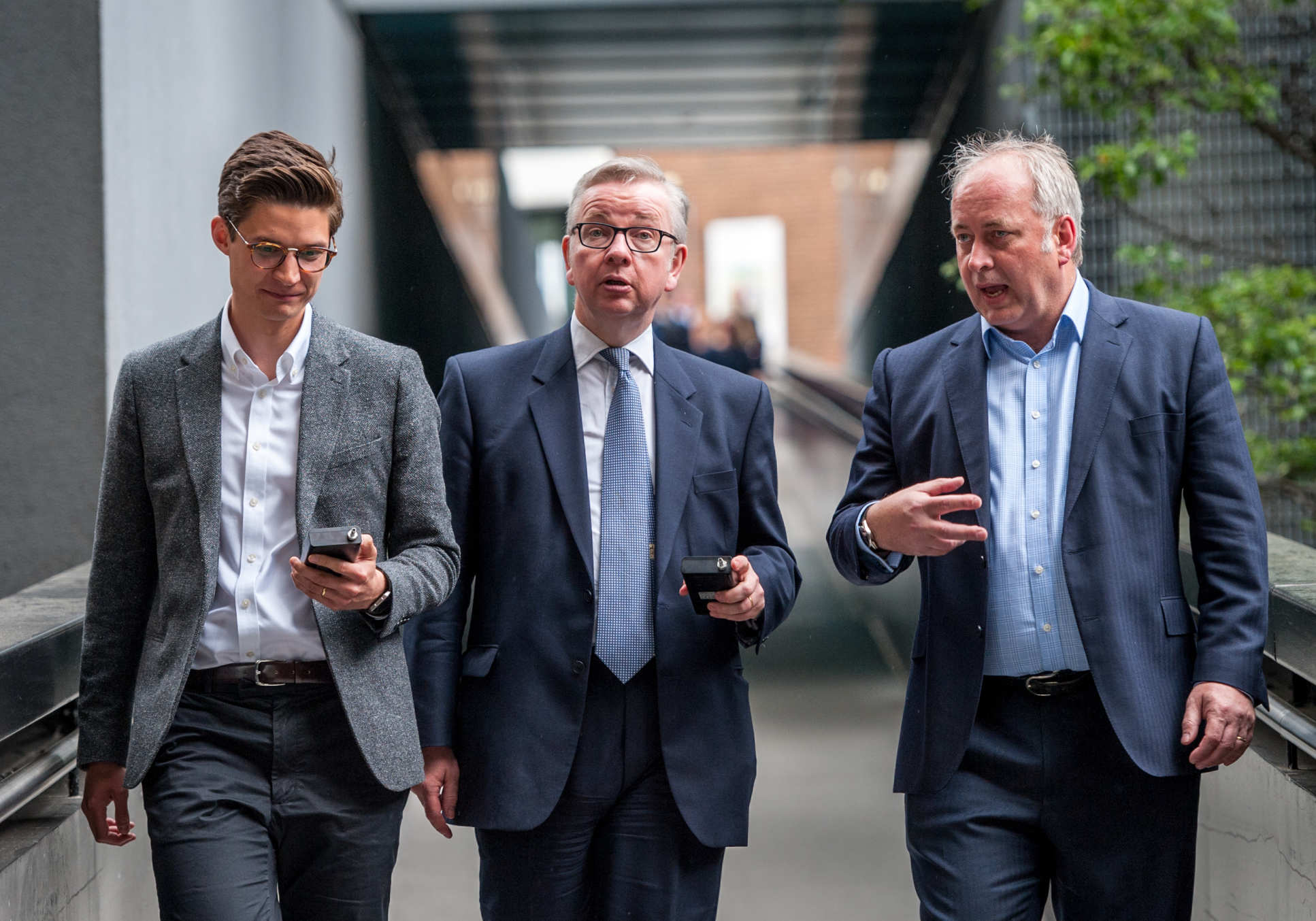Michael Gove launches Government’s Clean Air strategy at Imperial

Environment Secretary Michael Gove launched the Government’s Clean Air Strategy at Imperial College London.
The Secretary of State met Provost James Stirling and Vice Provost (Research and Enterprise) Nick Jennings to discuss the government’s £3.5bn plan to improve the UK’s air quality.

"Fascinating and illuminating" Michael Gove Environment Secretary
Mr Gove visited Imperial’s Data Observatory where he met with Professor Yi-Ke Guo, the Director of the Data Science Institute, and saw presentations from Dr David Birch and Dr Laetitia Mottet on how pollution is transported across London.
Mr Gove also met with Dr Benny Lo and Dr Marc Stettler to see demonstrations of air pollution sensors.

Dr Stettler showed how monitors can measure the amount of particles from air pollution that are deposited in a person's lungs.
Mr Gove described the research visit as 'fascinating and illuminating'.
Speaking about Imperial's research, Vice Provost Nick Jennings told the Environment Secretary: "The Data Science Institute is one of our six global challenge institutes that are tackling big society challenges. It brings together academics from all over College.
"The Data Observatory is a different way of interacting with data and interrogating the data."
Dr Benny Lo told the Environment Secretary that air quality can be worse on a platform at Paddington train station than in a smoking area.
Air pollution tool
Coinciding with the launch of the Clean Air strategy, Health Secretary Jeremy Hunt announced a new tool for local authorities developed for Public Health England by Imperial College and the UK Health Forum.
Dr Daniela Fecht, from the School of Public Health, helped develop the tool which will enable local authorities to estimate the economic impact of air pollution in their area.
The tool takes account of the cumulative cost for diseases where there is a strong association with air pollution: coronary heart disease, stroke, lung cancer, and child asthma.
Major public health risk
Air pollution is a major public health risk ranking alongside cancer, heart disease and obesity and the new Government strategy sets out how it will go further and faster than the EU in reducing human exposure to particulate matter pollution.
Mr Gove said: Air quality has improved significantly since 2010 but sixty years on from the historic Clean Air Act a clear truth remains - air pollution is making people ill, shortening lives and damaging our economy and environment.
“This is why today we are launching this clean air strategy, backed up with new primary legislation. It sets out the comprehensive action required across all parts of Government to improve air quality.”
The Environment Secretary added that the government will put new investment into scientific research and innovation strengthening the UK’s position as a world leader in clean technology and secure further emissions reductions.
Student entrepreneurs
During the visit, the Environment Secretary also met student entrepreneurs who have developed Pluvo, a futuristic roadside structure to tackle air pollution while acting as an innovative advertising medium.
Mr Gove said the concept was 'brilliant'.
Student innovators Lewis Hornby, Claudia Arnold and Nick Hooton (all Dyson School of Design Engineering, jointly with the Royal College of Art), have created an innovative device for tackling air pollution resembles a large glass chimney, uses “wet-scrubbing” technology which cleans the air in a similar way to rain.
The team’s vision is for Pluvo to be used in high-footfall pollution hotspots – such as Oxford Street. Holograms could be projected onto the mist to create an attractive visual display, and the team aims to make the system cost-neutral by using this feature as a new advertising medium to brands.
Article text (excluding photos or graphics) © Imperial College London.
Photos and graphics subject to third party copyright used with permission or © Imperial College London.